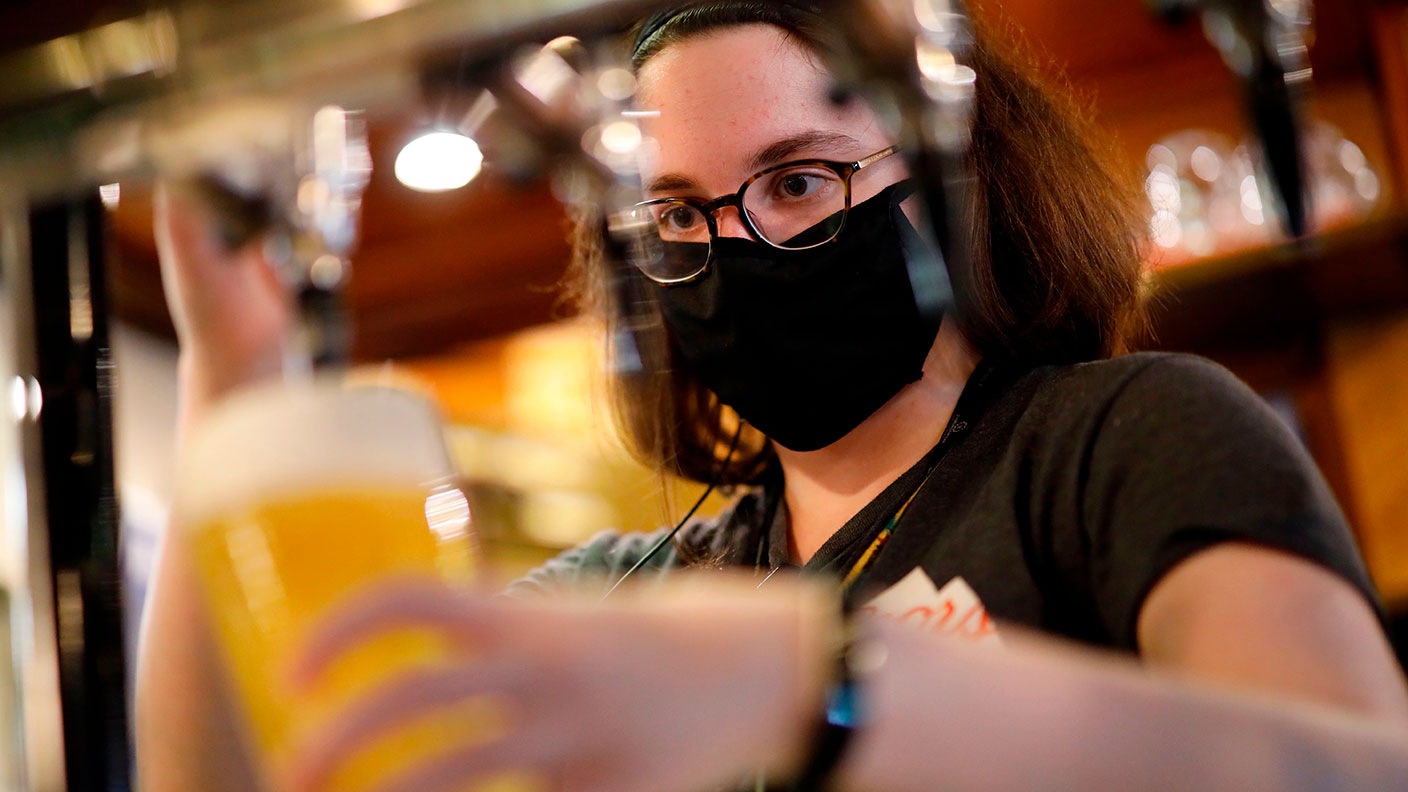UK employment figures and wages up as recovery gains speed
The number of British workers in employment is over half a million more than it was this time last year, with weekly earnings rising by around 7% year-on-year. Saloni Sardana looks at the numbers.


The number of Britons in employment rose by 365,000 in June compared with the previous month, and is 541,000 higher than June 2020, in the latest sign that the economy is slowly recovering from the pandemic.
June’s rise to 28.9 million is the biggest since the start of the pandemic, said the Office for National Statistics. But it remains 206,000 below the level seen in February 2020.
In a separate statistic, the ONS said the unemployment rate fell to 4.8%, down from 5% in the previous quarter.
MoneyWeek
Subscribe to MoneyWeek today and get your first six magazine issues absolutely FREE

Sign up to Money Morning
Don't miss the latest investment and personal finances news, market analysis, plus money-saving tips with our free twice-daily newsletter
Don't miss the latest investment and personal finances news, market analysis, plus money-saving tips with our free twice-daily newsletter
Wages see a big jump
Wages were up, too. In the three months to May 2021, average weekly earnings (including bonuses) rose by 7.3% and regular pay (excluding bonuses) rose by 6.6%. These are “headline” figures that “need to be interpreted with caution”, says the ONS, as there are “ temporary factors that have increased the headline growth rate in earnings”. The underlying rate lies somewhere between 3.2% and 4.4%.
The number of job vacancies in the UK also shot up past pre-pandemic levels with 862,000 jobs available between April and June, almost 40% higher than the previous quarter. This was 77,500 higher compared to the first three months of 2020.
Most of these jobs were in the hospitality and retail sector. This is unsurprising as much of these sectors were shut down until April due to stringent lockdowns in place in the UK.
The resumption of outdoor dining in April and indoor hospitality in May has triggered an excess demand for workers in these sectors. Hospitality at venues such as cinemas also resumed, giving a boost to the economy.
“There’s a lot of positives to take from this latest set of figures but there are also a number of questions that need answering. The most important for sectors struggling to find staff is how long will it take the labour market to reconfigure now restrictions are all but gone and furlough is almost at an end,” says Danni Hewson, financial analyst at AJ Bell.
Is this just a temporary post-pandemic spike?
The big question facing investors may be how the UK economy will fare once furlough measures, due to expire in Autumn, come to an end, with all restrictions ending on 19 July, despite the number of Covid cases creeping up.
“How much will desperate employers be willing to offer to tempt staff back into jobs and how much of that extra cost will they pass on to customers?” asks Hewson. “Where margins are tight, we are already hearing that employers are getting creative with non-pay related perks which play into the work life balance conversation that has become so popular”.
While the labour market is visibly tightening there’s also the chance that some nervous employers may be advertising jobs more than once. So there may be a degree of inflation in the vacancies figure, says Chris Gray, director of Manpower UK, a recruitment firm.
So should investors worry? After all, a labour shortage often translates into higher wages and higher inflation.
We got a taste that inflation may not be so “transitory” yesterday when UK inflation reached a three-year high in June.
And Sir David Ramsden, deputy governor for banking and markets at the Bank of England, said after the release, a sooner tightening of monetary policy may be required as inflation is expected to climb towards 4% by the end of the year.
But as Ruth Gregory, senior UK economist at Capital Economics, puts it: “While there is growing evidence that firms are finding it more difficult to hire workers, we suspect that most of these labour shortages will prove temporary and that they will be confined to a few sectors."
So it is likely that as the UK economy moves towards the “old normal” its labour market stabilises, but the end of furlough measures will be the true test of that.
Get the latest financial news, insights and expert analysis from our award-winning MoneyWeek team, to help you understand what really matters when it comes to your finances.
Saloni is a web writer for MoneyWeek focusing on personal finance and global financial markets. Her work has appeared in FTAdviser (part of the Financial Times), Business Insider and City A.M, among other publications. She holds a masters in international journalism from City, University of London.
Follow her on Twitter at @sardana_saloni
-
 How to invest in water - and should you?
How to invest in water - and should you?The ultimate in liquid investments, water companies offer investors’ portfolios a range of benefits. How can you invest in water?
-
 Act now to avoid inheritance tax on your pension with this one simple change
Act now to avoid inheritance tax on your pension with this one simple changeA quick and easy paperwork change could avoid your children paying inheritance tax on your pension if you act now. Here’s how.
-
 What's behind the big shift in Japanese government bonds?
What's behind the big shift in Japanese government bonds?Rising long-term Japanese government bond yields point to growing nervousness about the future – and not just inflation
-
 UK wages grow at a record pace
UK wages grow at a record paceThe latest UK wages data will add pressure on the BoE to push interest rates even higher.
-
 Trapped in a time of zombie government
Trapped in a time of zombie governmentIt’s not just companies that are eking out an existence, says Max King. The state is in the twilight zone too.
-
 America is in deep denial over debt
America is in deep denial over debtThe downgrade in America’s credit rating was much criticised by the US government, says Alex Rankine. But was it a long time coming?
-
 UK economy avoids stagnation with surprise growth
UK economy avoids stagnation with surprise growthGross domestic product increased by 0.2% in the second quarter and by 0.5% in June
-
 Bank of England raises interest rates to 5.25%
Bank of England raises interest rates to 5.25%The Bank has hiked rates from 5% to 5.25%, marking the 14th increase in a row. We explain what it means for savers and homeowners - and whether more rate rises are on the horizon
-
 UK inflation remains at 8.7% ‒ what it means for your money
UK inflation remains at 8.7% ‒ what it means for your moneyInflation was unmoved at 8.7% in the 12 months to May. What does this ‘sticky’ rate of inflation mean for your money?
-
 Would a food price cap actually work?
Would a food price cap actually work?Analysis The government is discussing plans to cap the prices of essentials. But could this intervention do more harm than good?
